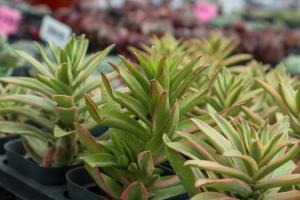Introduction
Water chestnuts are a type of plant that grow underwater. They are a popular ingredient in Asian cuisine and are known for their crunchy texture and mild, sweet flavor. But what does a water chestnut plant actually look like? In this article, we'll explore the physical characteristics of this unique plant.
Appearance
Water chestnut plants are aquatic and grow underwater. They typically have long, straight stems that can reach up to four feet in length. The stems are green and thick with long, narrow leaves attached. The leaves are glossy and have a deep green color. At the base of the plant, there are small corms that resemble bulbs. These corms are the part of the plant that is harvested and eaten.
Flowers
Water chestnut plants produce small, inconspicuous flowers that bloom between May and August. The flowers grow on the tips of the stems in clusters and are white or pale pink in color. The flowers only last for a few days before they wither and fall off.
Harvesting
Water chestnuts are typically harvested in the late summer and early fall. When the corms are mature, they will be about the size of a golf ball and have a hard outer skin. To harvest the corms, the stems of the plant are cut near the base and the corms are removed from the roots. The corms are then cleaned and peeled to reveal the edible, white flesh inside.
Cultivation
Water chestnuts are grown in shallow ponds or wetlands. They prefer a warm climate with plenty of sunlight and nutrient-rich soil. The plants are typically propagated by the division of corms or by planting seeds. Water chestnut plants are often considered invasive and can quickly spread throughout a body of water if not managed properly.
Uses
Water chestnuts are a versatile ingredient in cooking and can be used in a variety of dishes. They are commonly found in stir-fries, soups, and salads. The corms can be eaten raw or cooked and are a good source of fiber and potassium. Water chestnuts can also be used in traditional Chinese medicine to treat a variety of ailments, including coughs and digestive problems.
Conclusion
In conclusion, water chestnut plants are aquatic plants that produce small corms that are harvested and eaten. The plants have long, straight stems and narrow, glossy leaves. Water chestnut plants produce small, inconspicuous flowers and prefer warm, sunny climates with nutrient-rich soil. They are commonly used in Asian cuisine and can be eaten raw or cooked. With their mild, sweet flavor and crunchy texture, water chestnuts are a delicious addition to any dish.

 how many times do yo...
how many times do yo... how many planted tre...
how many planted tre... how many pine trees ...
how many pine trees ... how many pecan trees...
how many pecan trees... how many plants comp...
how many plants comp... how many plants can ...
how many plants can ... how many plants and ...
how many plants and ... how many pepper plan...
how many pepper plan...





























